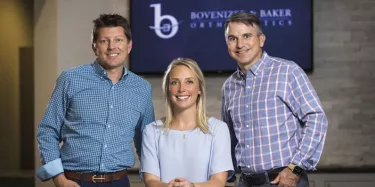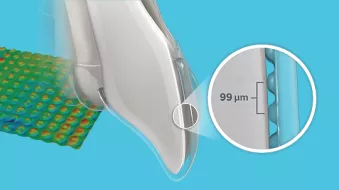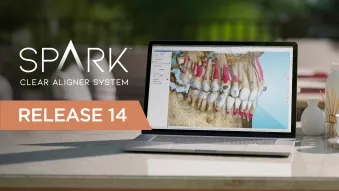Case Study: Innovation Driving Practice Growth
By Dr. Christopher Baker and Dr. Todd Bovenizer
Dr. Todd Bovenizer and Dr. Christopher Baker discuss keeping up with the latest advancements in orthodontics.
Innovation and technology are fundamental values we strongly believe in at Bovenizer and Baker Orthodontics. We believe that is crucial. From serving on the advisory board for Carestream, where we helped to improve and innovate their practice management software, to participating in Ormco insiders (a group of handpicked top clinicians who work with Ormco on product research and development), innovation has been a top priority for us.
We live by the saying, "What gets measured gets improved." Every morning, we look at statistics from Gaidge and OrthoFi before coming into the office, meet with the treatment coordinators and financial coordinator on goals for the day, and review pending patients who would be a good fit for the practice. It is essential to maintain high patient conversion to have an effective new patient process and not "Waste Appointments.
Over the past decade, as our practice has grown, we introduced another like-minded doctor. Dr. Keri Kenning, who has Damon brackets and clear aligner experience, has helped with numerous clinical and administrative tasks to help further modernize our practice.
Our collective experience led us to partner with Ormco, a manufacturer that offers meaningful, clinically focused orthodontic innovations that are hard to find elsewhere.
After experimenting with various other products, we landed on Ormco's Damon self-ligating brackets and brought in digital orthodontics like Spark Clear Aligners.
When we started our practice, we were dabbling in clear aligners and using 3D-printed models for patients at debond to ensure a top-notch outcome. We were only using clear aligners about 5% of the time. This has now increased to about 20% of cases to capture a broader adult market and older teens. This has been a great way to grow our practice.
Spark Clear Aligners
Spark Clear Aligners are continuously evolving, which includes start-to-finish improvements in the Spark Approver Software. We get back what we want with one or fewer modification from the initial submission in the approver system. There's less need for doctors to adjust the treatment plan because the team at Spark has listened to doctors. They've built protocols for specific tooth movements, giving us the flexibility and control we need to treat our patients.
Our initial prescription gives the Spark team (overseen by a doctor) what we are looking for, and the setup returns what we want. We still change or add specific attachments, but it's far less than what we used to do with other aligner products.
With new features from Spark Approver Software Release 14, we can make more adjustments and easily detail the case. Real Time Approval has expanded capability with instant changes and the ability to approve instantaneously. This has resulted in many cases being approved without having to be sent back to the Spark Technician Team. One of our favorite features we have seen in aligners int he past 5-plus years at ethe Integrated Hooks used for elastics. They have made it easier for the patient to place the elastics. In our practice, we previously used either buttons that were always coming off or slits in the posterior which were hard for the patients to use. We noticed this caused a lot for broken elastics and unseating of the aligner, even with attachments on those teeth.
We have encountered that Spark TruGentm material has proved to be more effective for teeth movement compared to the leading aligner material. Fewer refinements have led to us finishing cases more efficiently than a couple of years ago and under out estimated completions dates without compromising finish quality. Patients have also really enjoyed the more transparent clarity of the plastic and have asked for these aligners.
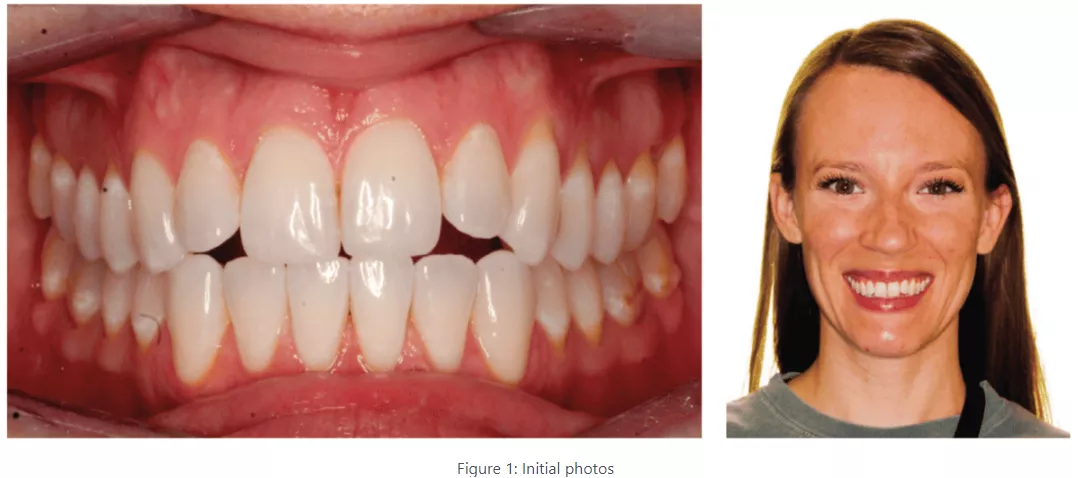
Case Study Number 1:
The 29-year-old patient presented with an anterior open bite, did not like her smile, and had difficulty eating some foods (Figure 1).
Her initial exam revealed an open bite of 2mm at the laterals, narrow and rolled-in arch on the premolar area, contributing to laterally excessive gum display in that region.
Our treatment goals were to close the anterior open bite with some posterior intrusion and expansion in the premolars and extrude and rotate the maxillary lateral incisors. We felt we could help with the gum display in the premolar region by expansion. We estimated 12 months of Spark Cleal Aligner treatment with good aligner-wear compliance.
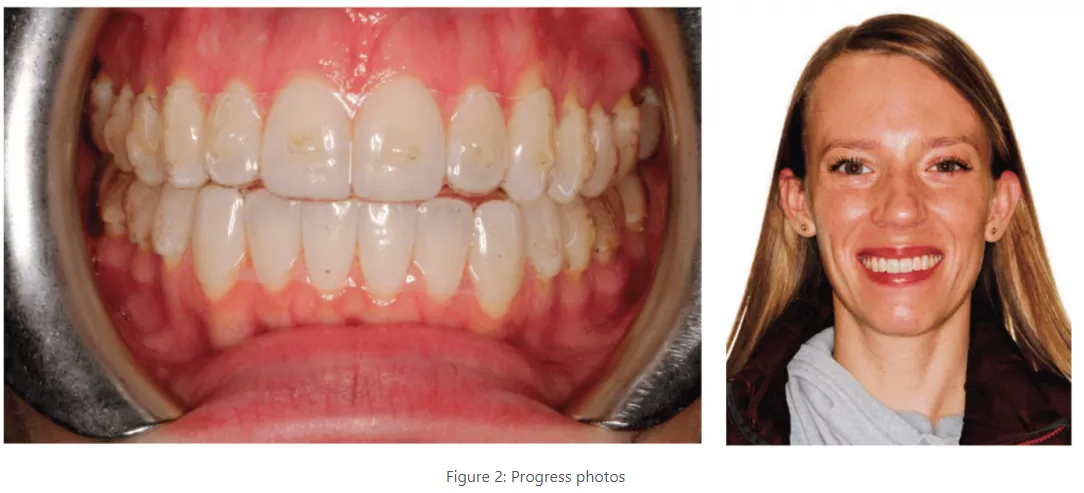
The patient was highly Compliant wearing Spark Aligners (Figure 2).
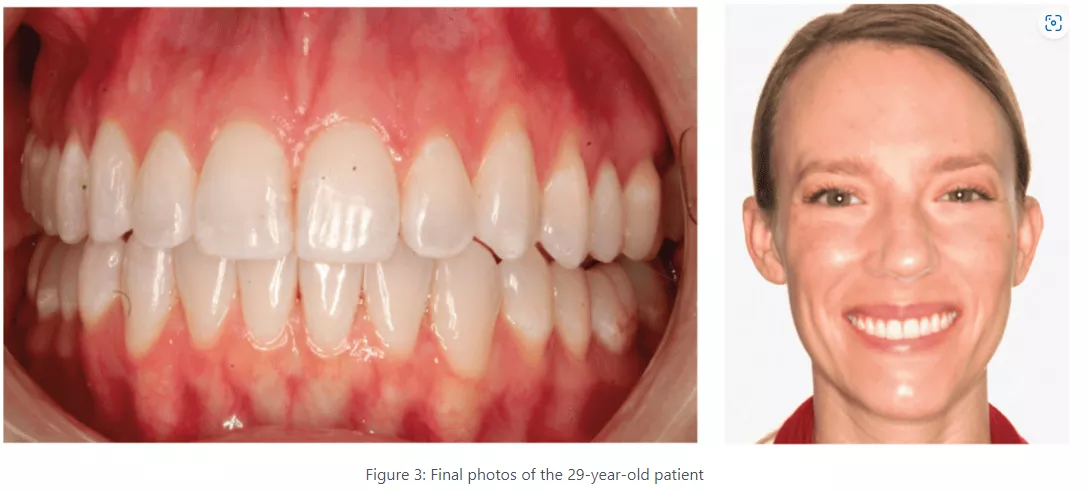
After one refinement to mainly tweak some black triangles in the lower jaw and seat the posterior, we completed treatment in 10 months, after five total visits. We were pleased with the final result (Figure 3). Individual results and treatment length may vary by patient.
When treated correctly, this is a relatively straightforward case. The initial Approver Setup automatically placed the sash attachments (Figure 4) our preferred choice for extrusion and rotation of laterals.

Case Conclusion:
This is an excellent example of how a small amount of doctor time and tweaking comes to life because our doctor's preferences in the Approver Software are set, and the Spark Team automatically puts them into place. Specifically, the premolar region expanded to our preferred Damon Arch Form for the desired result (Figure 5).
Damon Ultima System
Our practice always looks to improve performance and stay up to date with the latest best practices and innovations. That's why we incorporated multiple iterations of the DamonTM Self-Ligating bracket, including Damon 3MX, Q, Q2, and now the Damon UltimaTM System.
Ultima has allowed us to not only up our performance on the patient level but also to improve efficiency and continue to drive our clinical expectations of fuller smiles with smile arc and expanded buccal-segment arch forms.
Case Study Number 2:
We've used the newly re-engineered Damon Ultima Bracket for 2-1/2 years. It has greatly enhanced our finishing and has increased our efficiency. All three doctors want the finish at the highest standard and have smiles characteristic of a Bo/Baker Smile. When we can do this while improving efficiency, it is a Win-Win!
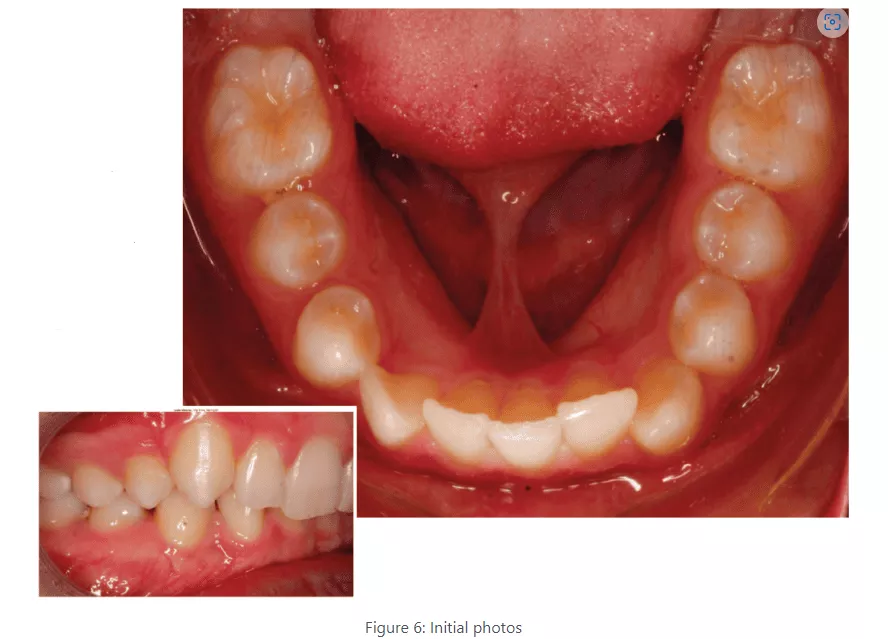
The patient presented with a Class ll dental occlusion, severe deep overbite and severe mandibular crowding (Figure 6).
We used procline brackets on the maxillary incisors, and due to the deep overbite, we bonded the maxillary arch first. We like to do this to increase patient comfort from larger bite turbos.
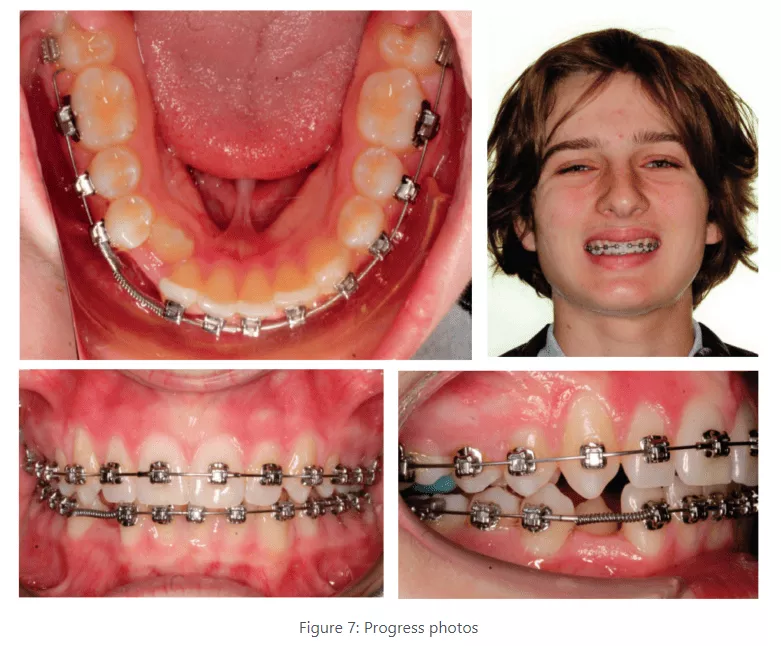
At the second appointment, we placed an increased Curve of Spee on maxillary arch to prepare for lower bonding, for which we used retrocline torque on the mandibular arch. We achieved first order control with rotational correction at the 0.4 X 0.0275 wire and began interarch elastics (Figure 7).
We also started seeing very nice arch-form development. This transitioned into our 0.18 X 0.0275 for more arch-form progression and gave us a torquing couple with this newly engineered system with a rounded rectangular wire in a new parallelogram slot. This makes correction easier by allowing our centrals to get to 7 degrees and then having protection not to dump the incisors as we were used to in our older versions of passive self-ligation. This is very important in finishing; instead of using torqued wires, we can use a larger wire to achieve higher torque. This is even more important in the mandibular arch to prevent excessive proclination of the lower incisors in Class ll cases, which makes finishing very tough. To avoid this, we have a torquing couple with the new design (Figure 8).

We have a locked-in occlusion from his finish, including canine and anterior guidance. There is a great smile arc, and the arch form presents itself form anterior to posterior with no excessive dumping of the teeth in the posterior, which would make the smile less than optimal by not being as upright.
About the Authors:
Dr. Todd Bovenizer, DDS, MS, graduated from Virginia Tech with his Bachelor's in Biology and West Virginia with his Master's in Orthodontics and Doctor of Dental Surgery. He is a Board-Certified Orthodontist from the American Board of Orthodontics. Dr. Bovenizer is part of Damon's Mentor Program and lectures nationally on the Damon System. He serves on Ormco Insider's product development team, where he meets with top clinicians to discuss product research and development.
Dr. Christopher Baker, DDS, MSD, is a Board-Certified Orthodontist in Cary, North Carolina. He partnered with Dr. Bovenizer in 2014. He is a Past-President in the North Carolina Association of Orthodontists and is currently the North Carolina Captain for the AAOPAC. He and his wife of 15 years have two energetic boys, and they all love spending time together, especially boating in the waters of their favorite islands in the Caribbean.
